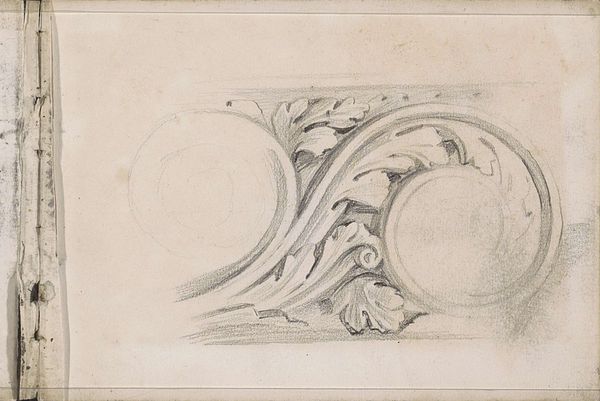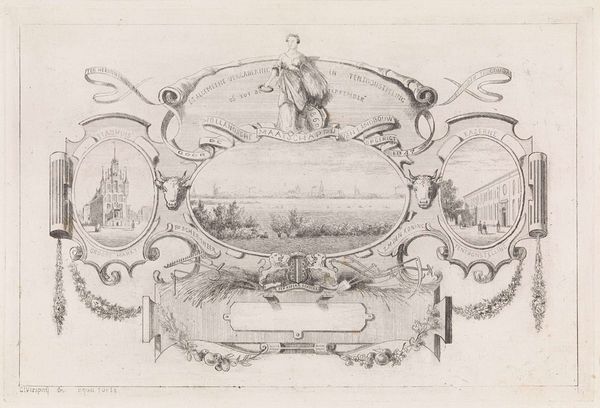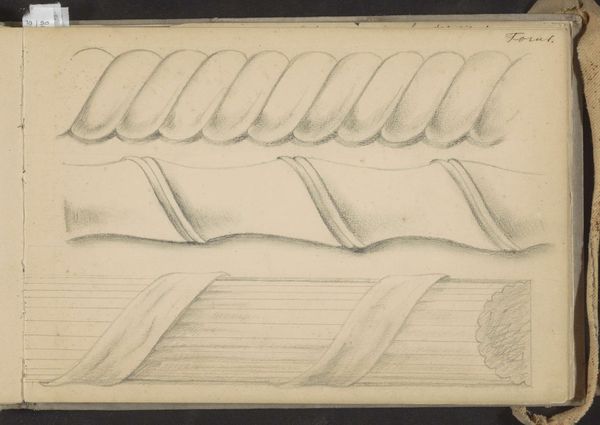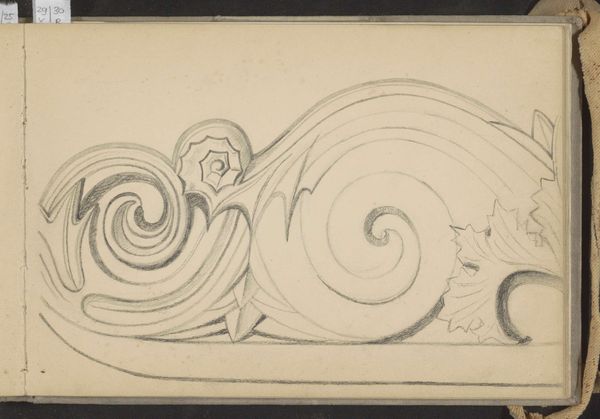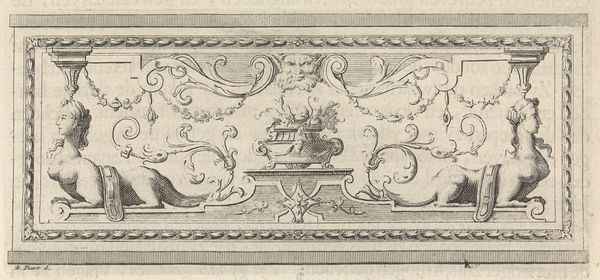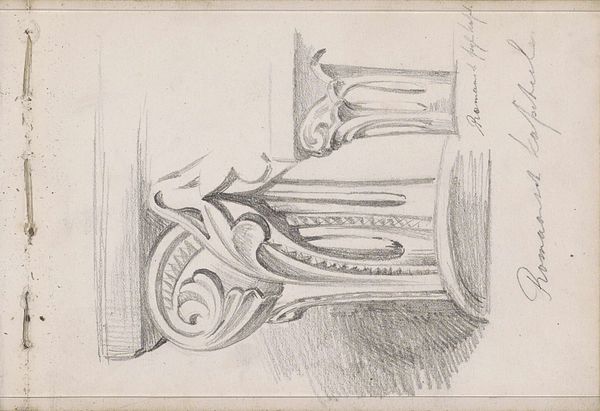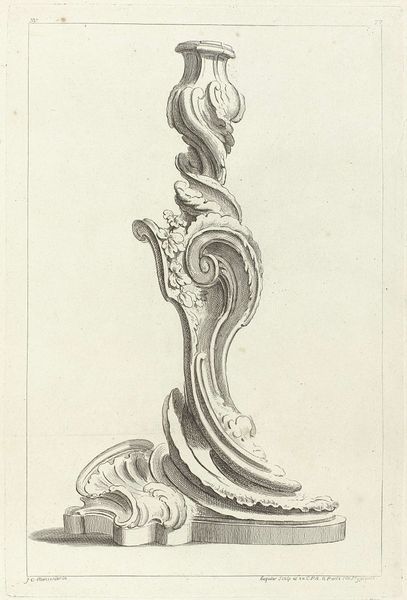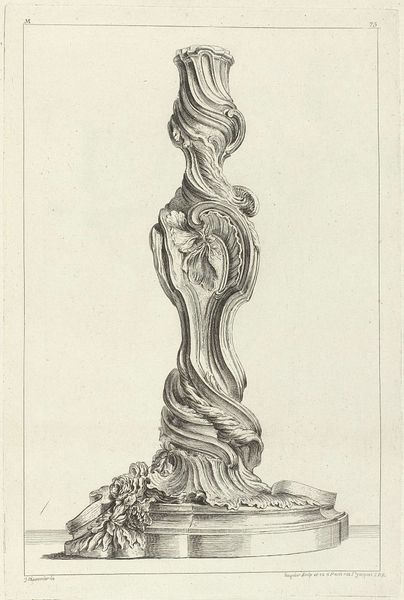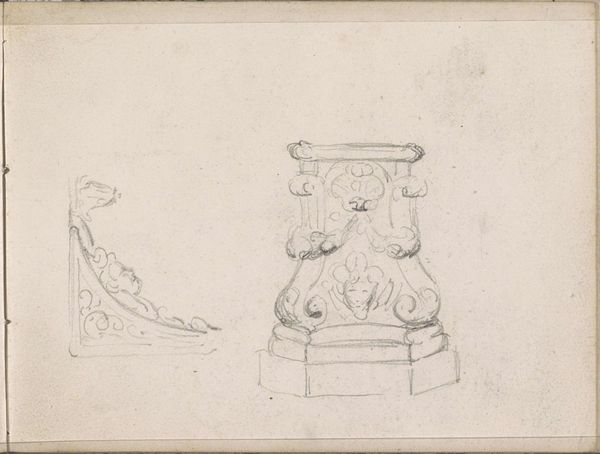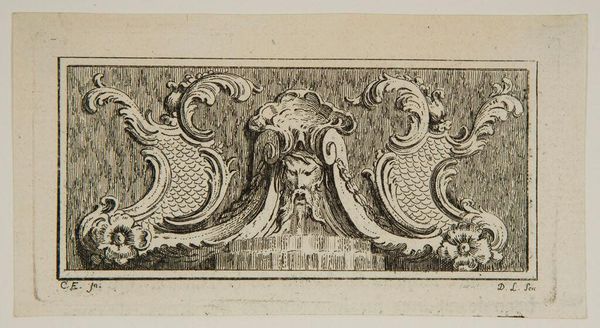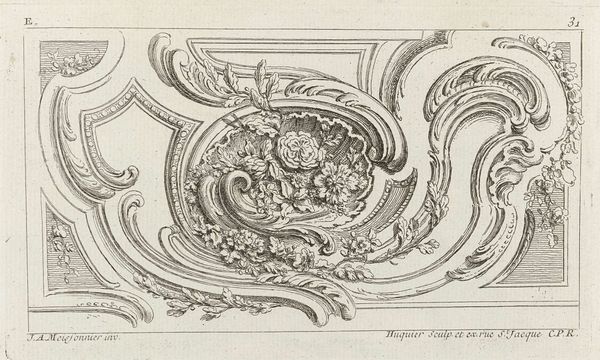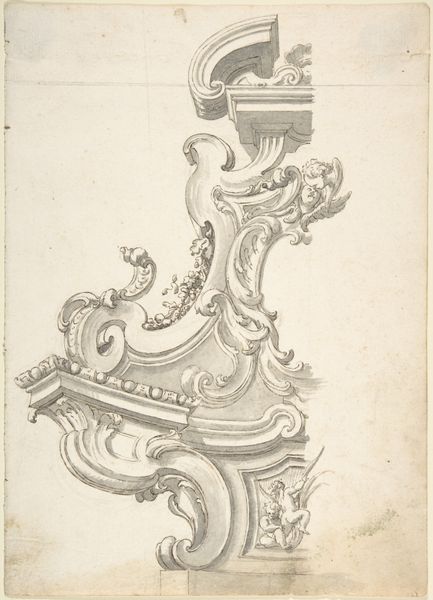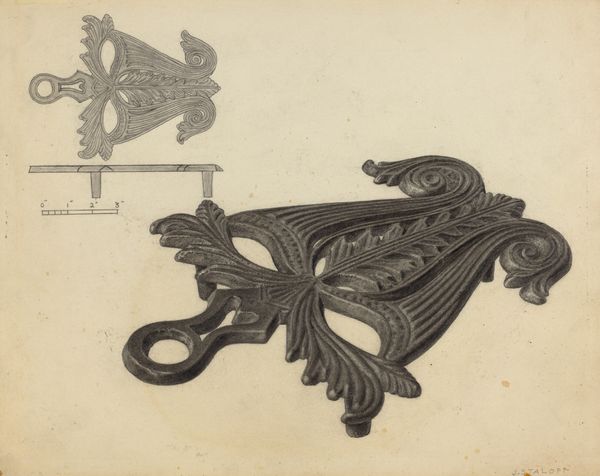
drawing, print, engraving
#
drawing
#
baroque
# print
#
geometric
#
decorative-art
#
engraving
Dimensions: mount: 28 x 22 in. (71.1 x 55.9 cm) frame: 30 1/2 x 24 1/2 in. (77.5 x 62.2 cm)
Copyright: Public Domain
Editor: This is Juste-Aurèle Meissonnier’s "Design for a Surtout and a Tureen," made in 1746. It’s a print, an engraving on paper, housed at the Met. I find it very elaborate! It looks like something fit for Versailles. All those swirling lines and the lobster on top...it feels excessive, almost performative. What do you make of this piece? Curator: Excessive is a key term here. The Baroque style, which you see so clearly in this design, wasn't just about decoration; it was a declaration. Think of the court of Louis XV where this aesthetic flourished. What do you suppose the message was in displaying such lavish objects? Editor: Maybe something about power, right? "We have this, you don't"? It feels a bit like propaganda, especially if you imagine this tureen as an actual object on display at court. Curator: Precisely. It was about legitimizing power and establishing social hierarchy. The court was deeply invested in self-representation, and art, including designs like this one, served as a powerful tool. Consider also the audience for these prints. Were they exclusively for the aristocracy? Editor: Good point! If prints were circulating, it might also have influenced the aspirational middle class or served to create a sense of awe, solidifying the existing order even further. The geometric pattern makes me wonder what type of people owned the object in the baroque era? Curator: Precisely. The design caters to a new level of taste and access that prints facilitate. The very act of designing, printing, and distributing these images changed the dynamics of taste and luxury consumption. So, it’s not just about "having," but about the spectacle of having, carefully constructed and widely disseminated. Editor: I hadn't thought about the print itself being part of that performance. So, the object, the design, and the circulation of the design are all wrapped up in this display of power and wealth. I see it differently now, it's much more than a fancy soup bowl! Curator: Indeed. It’s a material witness to the political theater of the era. And our interpretation shapes our current cultural landscape.
Comments
No comments
Be the first to comment and join the conversation on the ultimate creative platform.
